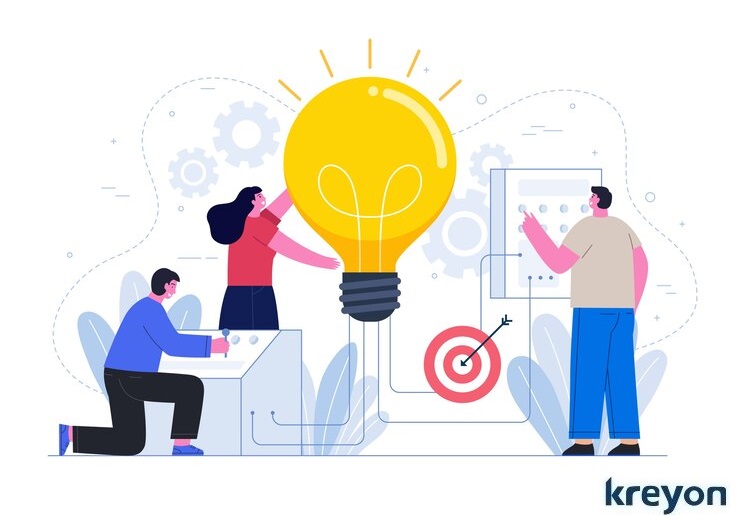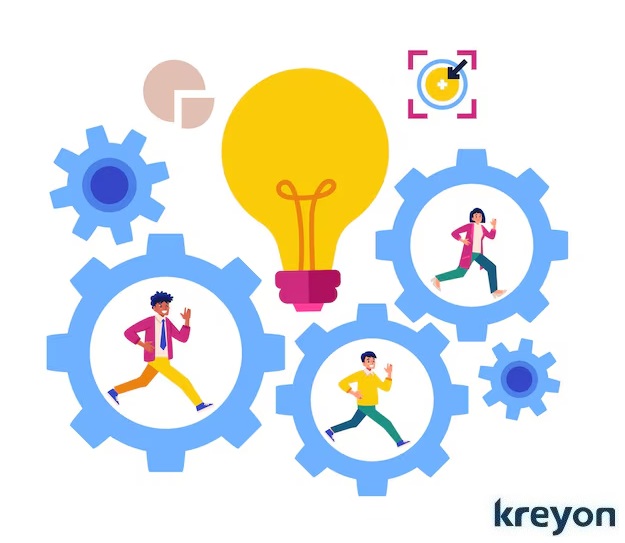Unleashing Innovation: Integrating Design Thinking and AI to Create Breakthrough Solutions

Innovation is the heartbeat of progress. In rapidly evolving software landscape, the convergence of human creativity and artificial intelligence (AI) has become a driving force behind groundbreaking solutions.
Design thinking, with its human-centered approach, and AI, with its analytical power, are two formidable pillars shaping the future of problem-solving. But what happens when we integrate these two powerful methodologies? The result is nothing short of transformative.
AI: The Powerhouse of Data and Insights
While Design Thinking excels at understanding human needs, AI brings its analytical muscle to the table. AI projects thrive on continuous iteration and refinement. It involves constant learning and adaptation.
Models evolve as they ingest new data and feedback, requiring ongoing iteration to stay relevant in real-world scenarios. By leveraging machine learning algorithms and data analysis tools, AI can:
Uncover hidden patterns: AI can analyze massive datasets to identify trends and user behaviors that might be invisible to the human eye.
Predict user needs: AI can anticipate future user requirements based on past behavior and industry trends.
Refine prototypes: AI-powered user testing tools can provide faster and more precise feedback on prototypes, leading to quicker iterations.
Automate repetitive tasks: AI can handle mundane tasks like data gathering and analysis, freeing up human designers to focus on the creative aspects.
The Synergy of Design Thinking and AI

Design thinking is a human-centered approach to innovation that prioritizes empathy, creativity, and iterative problem-solving. It encourages multidisciplinary collaboration and places the end-user at the core of the design process.
On the other hand, AI, with its ability to process vast amounts of data and identify complex patterns, offers unprecedented opportunities for automation, optimization, and predictive analysis.
When these methodologies converge, they create a synergy that capitalizes on the strengths of both approaches.
Design thinking provides the framework for understanding human needs, generating ideas, and prototyping solutions, while AI enhances the process with data-driven insights, predictive modeling,
and intelligent automation.
Empathy-Driven AI Solutions
At the heart of design thinking lies empathy – the ability to deeply understand the needs, desires, and pain points of users.
Integrating AI into this process allows organizations to leverage vast amounts of data to gain insights into user behavior, preferences, and challenges.
By analyzing user interactions, sentiment analysis, and feedback, AI can uncover hidden patterns and opportunities that inform the design process.
For example, in healthcare, AI-powered systems can analyze patient data to identify trends and predict health outcomes.
By understanding patient needs and behaviors, healthcare providers can tailor interventions and treatments more effectively, ultimately improving patient outcomes and experiences.
Ideation and Prototyping at Scale
Design thinking encourages ideation and rapid prototyping to explore a wide range of solutions and iterate towards the best outcome. AI augments this process by generating and evaluating ideas at scale, accelerating innovation and reducing time-to-market.
AI-powered generative design tools, for instance, can quickly generate multiple design options based on specified parameters and constraints.
These designs can then be evaluated using AI algorithms that simulate user interactions, predict performance metrics, and optimize for desired outcomes.
By automating repetitive tasks and leveraging computational power, AI frees up designers to focus on creativity
and strategic decision-making.
Enhancing Decision-Making with Data
One of the key advantages of AI is its ability to analyze data and extract actionable insights. By integrating AI into the design thinking process, organizations can make data-driven decisions that are grounded in real-world evidence.
For instance, in product design, AI algorithms can analyze market trends, consumer preferences, and competitor offerings to identify opportunities for differentiation.
By leveraging predictive analytics, organizations can anticipate future demand, optimize pricing strategies, and allocate resources more effectively. This tool is incorporated in customised CRM solutions for helping sales reps reach their goals effectively.
Human-Centered AI

While AI brings unprecedented capabilities to the table, it is essential to ensure that these technologies remain human-centered and ethical.
Design thinking provides a valuable framework for addressing these concerns by placing a strong emphasis on user needs, values, and ethical considerations.
By involving diverse stakeholders in the design process, organizations can anticipate potential ethical challenges, such as bias, privacy concerns, and unintended consequences.
Design thinking encourages continuous feedback and iteration, allowing organizations to course-correct and mitigate risks throughout the development lifecycle.
Personalized Learning for Employees with AI
Let’s consider a case study where we helped design an application using design thinking and AI for training employees. Traditional one-size-fits-all approaches to learning often fails to address the diverse needs & styles of employees.
By integrating design thinking and AI, educators can create personalized learning experiences that adapt to individual preferences, abilities, and interests of employees.
Using AI-powered adaptive learning platforms, students receive customized content, feedback, and support tailored to their unique learning profiles.
These platforms leverage data analytics to track employee progress, identify learning gaps, and recommend personalized interventions.
By combining insights from cognitive science, pedagogy, and user experience design, educators can create immersive learning experiences that engage and empower teams.
The Way Ahead

As we look to the future, the integration of design thinking and AI holds immense potential for driving innovation across industries.
Whether it’s healthcare, education, finance, or manufacturing, organizations that embrace this interdisciplinary approach will be better equipped to address complex challenges and seize new opportunities.
However, realizing this potential requires a shift in mindset and culture. Organizations must foster a culture of experimentation, collaboration, and continuous learning.
By breaking down silos and embracing diversity, organizations can harness the collective intelligence of multidisciplinary teams and unlock new possibilities.
To Sum Up
Integrating design thinking and AI is not just about combining methodologies; it’s about reimagining the way we solve problems, innovate, and create value for society.
By marrying human creativity with artificial intelligence, we can unleash the full potential of technology to create breakthrough solutions that enrich lives, drive economic growth, and shape a better future for everyone.
Kreyon Systems expertise in design thinking and AI solutions can help you solve complex business challenges. If you have any questions or need help with implementation, please reach out to us.
